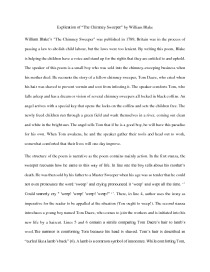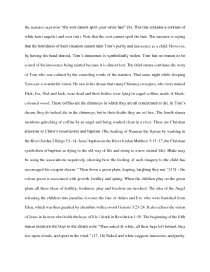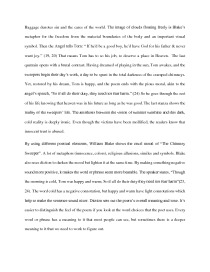William Blake’s „The Chimney Sweeper“ Analysis



William Blake’s „The Chimney Sweeper“.
William Blake’s "The Chimney Sweeper" was published in 1789, Britain was in the process of passing a law to abolish child labour, but the laws were too lenient. By writing this poem, Blake is helping the children have a voice and stand up for the rights that they are entitled to and uphold. The speaker of this poem is a small boy who was sold into the chimney-sweeping business when his mother died. He recounts the story of a fellow chimney sweeper, Tom Dacre, who cried when his hair was shaved to prevent vermin and soot from infesting it. The speaker comforts Tom, who falls asleep and has a dream or vision of several chimney sweepers all locked in black coffins. An angel arrives with a special key that opens the locks on the coffins and sets the children free. The newly freed children run through a green field and wash themselves in a river, coming out clean and white in the bright sun. The angel tells Tom that if he is a good boy, he will have this paradise for his own. When Tom awakens, he and the speaker gather their tools and head out to work, somewhat comforted that their lives will one day improve.
- Literature Analysis
- Microsoft Word 17 KB
- 2020 m.
- English
- 4 pages (1230 words)
- University
- Karina

















